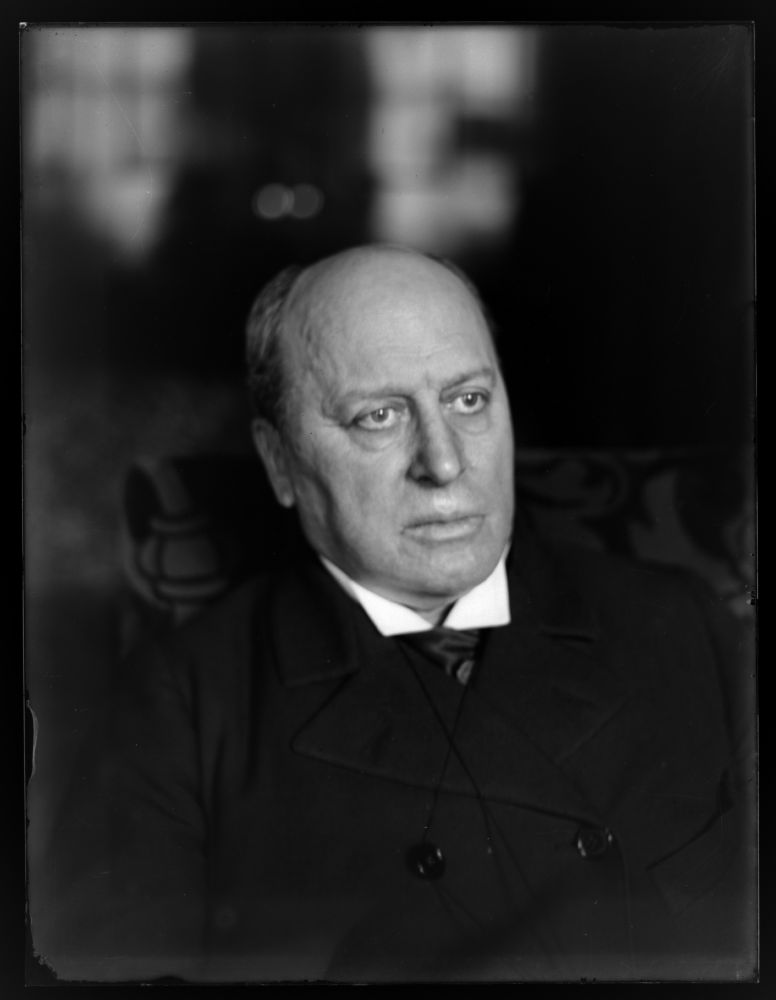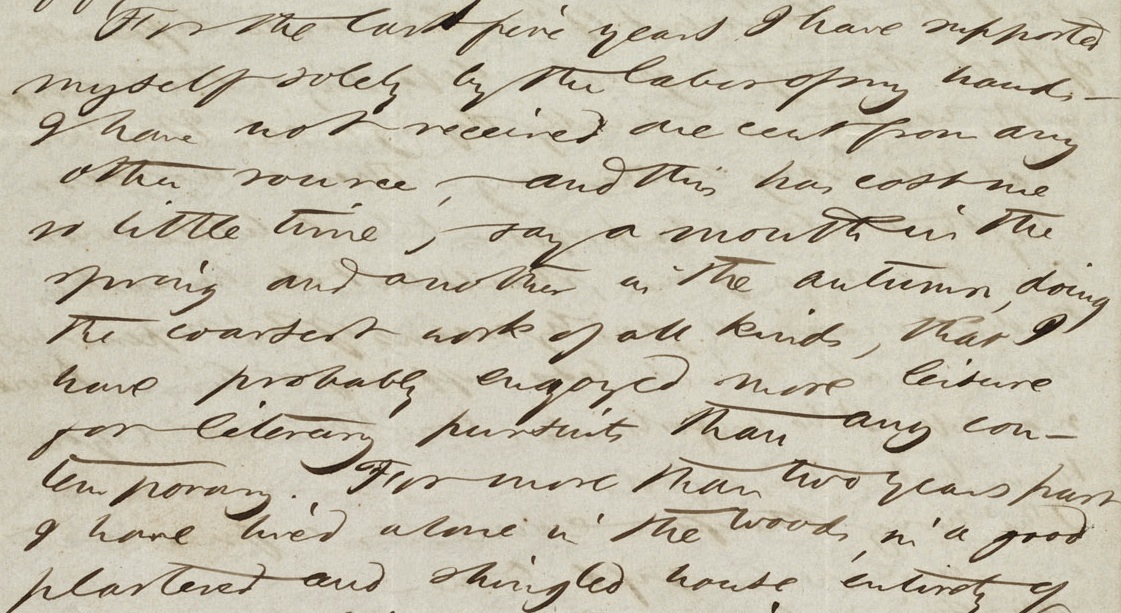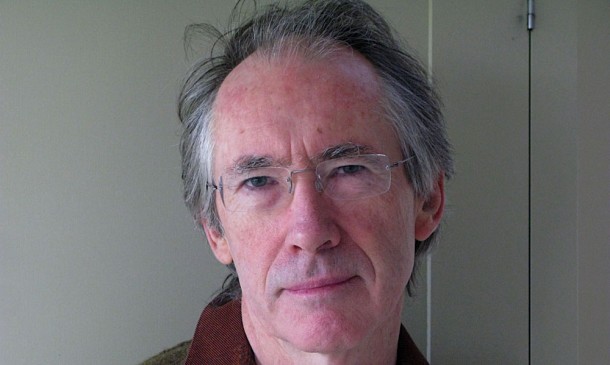Ernest Hemingway, American Red Cross volunteer, 18 or 19 years old, in Milan, 1918.
Photo credit: Ernest Hemingway Photograph Collection, John F. Kennedy Presidential Library and Museum, Boston. Portrait by Ermeni Studios, Milan, Italy. (Via.)
Official website of the author
Ernest Hemingway, American Red Cross volunteer, 18 or 19 years old, in Milan, 1918.
Photo credit: Ernest Hemingway Photograph Collection, John F. Kennedy Presidential Library and Museum, Boston. Portrait by Ermeni Studios, Milan, Italy. (Via.)

Henry James, ca. 1900, age 57. From the collection of the George Eastman House on Flickr.
Not many photos of James exist, and none are as revealing as this. The most recognized image we have of “the master” is the iconic John Singer Sargent portrait of 1913, which shows James as the Great Man. And that is how I always pictured him — aloof, fusty, royal — until I stumbled across this amazing picture. Here James looks haunted and weary, as I imagine he must have been. A great man, of course, but still an artist who struggled, like the rest of us.
Myself, I’ve set up a second computer, devoid of internet, for my fiction-writing. That’s to say, I took an expensive Mac and turned it back into a typewriter. (You should imagine my computer set-up guy’s consternation when I insisted he drag the internet function out of the thing entirely. “I can just hide it from you,” he said. “No,” I told him, “I don’t want to know it’s in there somewhere.”)
— Jonathan Lethem (via)
And here I thought I was the only one going to such extremes.

The Boston Public Library in Copley Square, where I often go to write, is running an amazing year-long exhibition called “Cool + Collected: Treasures of the BPL” which highlights some of the rare holdings in the library’s collection. The contents of the exhibit rotate every few months, and the current crop is truly remarkable. It includes original handwritten letters by Louisa May Alcott, Herman Melville, Harriet Beecher Stowe, Mark Twain, Nathaniel Hawthorne, Frederick Douglass, and others. It is a hall of fame of American letters! My favorites are an original working draft of a poem by Walt Whitman, with edits literally cut and pasted on the page, and a four-page letter from Henry David Thoreau to Horace Greeley which begins:
Concord May 19th 1848.
My Friend Greeley,
I received from you fifty dollars today. —
For the last five years I have supported myself solely by the labors of my hands — I have not received one cent from any other source, and this has cost me so little time, say a month in the spring and another in the autumn, doing the coarsest work of all kinds, that I have probably enjoyed more leisure for literary pursuits than any contemporary. For more than two years past I have lived alone in the woods, in a good plastered and shingled house entirely of my own building, earning only what I wanted, and sticking to my proper work. The fact is man need not live by the sweat of his brow — unless he sweats easier than I do — he needs so little. For two years and two months all my expenses have amounted to but 27 cents a week, and I have fared gloriously in all respects. If a man must have money, and he needs but the smallest amount, the true and independent way to earn it is by day-labor with his hands at a dollar a day. — I have tried many ways and can speak from experience. — Scholars are apt to think themselves privileged to complain as if their lot was a peculiarly hard one. How much have we heard about the attainment of knowledge under difficulties of poets starving in garrets — depending on the patronage of the wealthy — and finally dying mad. It is time that men sang another song. There is no reason why the scholar who professes to be a little wiser than the mass of men, should not do his work in the ditch occasionally, and by means of his superior wisdom make much less suffice for him. A wise man will not be unfortunate. How then would you know but he was a fool?
The letter ends, “P. S . My book” — Walden, presumably — “is swelling again under my hands, but as soon as I have leisure I shall see to those shorter articles. So, look out.” (You can read a transcript of the rest of the letter here.)
The exhibit has other wonderful things, too, posters and prints and rare books and so on. But to me — to any writer or reader, I bet — to see the actual handwriting of these giants of American letters is to feel their presence. The experience is electric.
If you’re around Copley Square, check it out (through June). If not, the whole exhibit is available online, in glorious high resolution, on Flickr. Lord knows what else the BPL has stashed away in the vault. Very cool indeed.
Philip Roth at his home in rural Connecticut, 2004. (Via.) Photo by James Nachtwey. More about Roth’s work habits here.

From “The Background Hum: Ian McEwan’s Art of Unease,” by Daniel Zalewski, The New Yorker, 2.23.09:
… McEwan keeps a plot book — an A4 spiral notebook filled with scenarios. “They’re just two or three sentences,” he said.…
McEwan said that he never rushes from notebook to novel. “You’ve got to feel that it’s not just some conceit,” he said. “It’s got to be inside you. I’m very cautious about starting anything without letting time go, and feeling it’s got to come out. I’m quite good at not writing. Some people are tied to five hundred words a day, six days a week. I’m a hesitater.”
When McEwan does begin writing, he tries to nudge himself into a state of ecstatic concentration. A passage in “Saturday” describing Perowne in the operating theatre could also serve as McEwan’s testament to his love of sculpting prose:
For the past two hours he’s been in a dream of absorption that has dissolved all sense of time, and all awareness of the other parts of his life. Even his awareness of his own existence has vanished. He’s been delivered into a pure present, free of the weight of the past or any anxieties about the future.… This state of mind brings a contentment he never finds with any passive form of entertainment. Books, cinema, even music can’t bring him to this.… This benevolent dissociation seems to require difficulty, prolonged demands on concentration and skills, pressure, problems to be solved, even danger. He feels calm, and spacious, fully qualified to exist. It’s a feeling of clarified emptiness, of deep, muted joy.
For McEwan, a single “dream of absorption” often yields just a few details worth fondling. Several hundred words is a good day.… He told me, “You spend the morning, and suddenly there are seven or eight words in a row. They’ve got that twist, a little trip, that delights you. And you hope they will delight someone else. And you could not have foreseen it, that little row. They often come when you’re fiddling around with something that’s already there. You see that by reversing a word order or taking something out, suddenly it tightens into what it was always meant to be.”
Sir Arthur Conan Doyle, from the Library of Congress Flickr photo stream. The photo apparently dates from 1913 or thereabouts. I always imagined Conan Doyle as a less modern, more Victorian character than this — more like Holmes.
Flickr has lots of wonderful vintage images like this one, not all book-related obviously. I recommend the streams of the Library of Congress, the Smithsonian, and the George Eastman House for starters, but there are lots more. If you find any needles buried in those haystacks, do let me know.